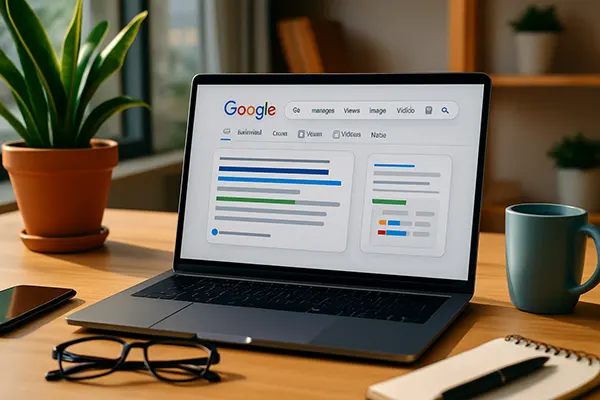Zero-Click Searches in 2025: How to Adapt Your Content to Evolving Google User Behaviour

In recent years, the shift towards zero-click searches on Google has accelerated, redefining how users interact with search results and how content creators approach SEO. By February 2025, more than 65% of all Google searches end without a click. This evolution highlights a crucial challenge for digital marketers, publishers, and businesses alike: how to remain visible and valuable in a search environment where the user’s journey ends before they ever reach your website. This article explores effective strategies to adapt your content to meet the needs of zero-click behaviour while remaining aligned with Google’s quality guidelines.
Understanding the Zero-Click Phenomenon in 2025
Zero-click searches refer to queries where users find the information they need directly on the search engine results page (SERP) without clicking through to a website. Google achieves this by displaying featured snippets, knowledge panels, instant answers, and other rich results. In 2025, AI-generated summaries in Google’s Search Generative Experience (SGE) further reduce the need for traditional clicks.
This shift primarily affects informational queries such as “weather in London”, “definition of blockchain”, or “how tall is Mount Everest”. These searches are resolved within the SERP, making it harder for websites to attract traffic through these keywords. As a result, content producers must revise their strategy to focus on visibility and authority instead of click-through rates alone.
It’s important to note that transactional or navigational queries, like “buy running shoes online” or “Facebook login”, still often result in clicks. However, even these are increasingly accompanied by ad placements and dynamic carousels that limit organic visibility. Understanding which types of content are most at risk can help in planning and prioritising updates or alternative formats.
How Zero-Click Impacts SEO and User Engagement
Zero-click behaviour drastically changes traditional SEO metrics. Click-through rate (CTR), once a reliable success indicator, becomes less relevant. Instead, impressions, visibility in featured snippets, and brand recall take precedence. For many websites, the challenge lies in staying present in users’ minds even without a visit.
Moreover, engagement now happens at the SERP level. Google encourages content formats that answer questions quickly and clearly—often displaying lists, tables, or definitions pulled directly from your content. This calls for greater focus on structure, markup, and clarity in your writing.
To measure engagement more accurately, SEOs now rely on tools like Google Search Console’s performance insights, looking at visibility metrics such as “average position” and “total impressions”. Monitoring how often your content appears in zero-click positions is key to evaluating strategy effectiveness.
Adapting Content Strategies to Stay Competitive
To thrive in a zero-click environment, content must be optimised for featured snippets, voice search, and AI previews. One effective method is structuring answers concisely at the top of your content while still providing in-depth value further down the page. Schema markup also plays a critical role, helping Google interpret your content more effectively.
Content creators are also encouraged to include original insights, statistics, or unique research to reduce the risk of being summarised without attribution. In a zero-click world, differentiation is key. Establishing authority through high-quality E-E-A-T (Experience, Expertise, Authoritativeness, and Trustworthiness) content is no longer optional—it’s essential.
Brand visibility becomes more critical than ever. When users don’t click, recognition through logos, names, or repeat appearances in rich results builds trust. Investing in a multi-platform strategy that includes social media, email, and podcasts also reinforces authority beyond search engines.
Utilising Structured Data and Snippet-Friendly Formats
Structured data is central to winning zero-click positions. Marking up FAQs, How-to guides, and product information with schema improves your chances of being chosen for enhanced display formats. This increases visibility without requiring extra clicks.
Additionally, snippet-friendly formatting—such as using bulleted lists, short paragraphs, and question-answer formats—makes it easier for search engines to extract useful content. Including clear subheadings and direct answers early in the text aligns with how AI and search bots evaluate content.
Keep in mind that not all snippets are created equal. Targeting multiple types of SERP features (e.g., People Also Ask boxes, Local Packs, and Video Carousels) allows for diversified visibility. Google is moving toward multimodal SERPs, meaning images, videos, and audio formats should also be part of your optimisation strategy.

Future-Proofing Your Website Against Traffic Decline
To ensure sustainable performance, websites must focus on holistic user value. Rather than chasing high-volume keywords, target mid-funnel and long-tail queries that demonstrate user intent. These are more likely to drive meaningful visits and conversions.
Content should be written with an emphasis on clarity, helpfulness, and authority. Demonstrating author expertise, sourcing reputable data, and offering actionable advice helps to establish trust—even when traffic is lower than in previous years. Adding context around facts can also discourage misrepresentation by AI summarisation tools.
In addition to content improvements, consider how design impacts experience. Fast load times, mobile-first layouts, and accessibility enhancements make your pages more likely to rank in any SERP context. Google’s emphasis on user experience remains a vital factor in performance.
Maintaining Relevance with Evolving Algorithms
Google’s updates in 2025 continue to reward content that aligns with the search intent behind a query. That means analysing what users truly want—be it a quick fact, a comprehensive guide, or a product comparison—and structuring your site accordingly.
Regularly audit and refresh outdated content to reflect current standards and ensure accuracy. Pages that demonstrate continual value are more likely to appear in AI-generated overviews and voice results. Include metadata, images, and clearly defined sections to support this.
Finally, invest in building relationships with your audience through email newsletters, membership content, and interactive tools. When clicks become rarer, loyalty becomes priceless. Encouraging direct visits and repeat engagement outside of Google builds resilience against future changes in search dynamics.
